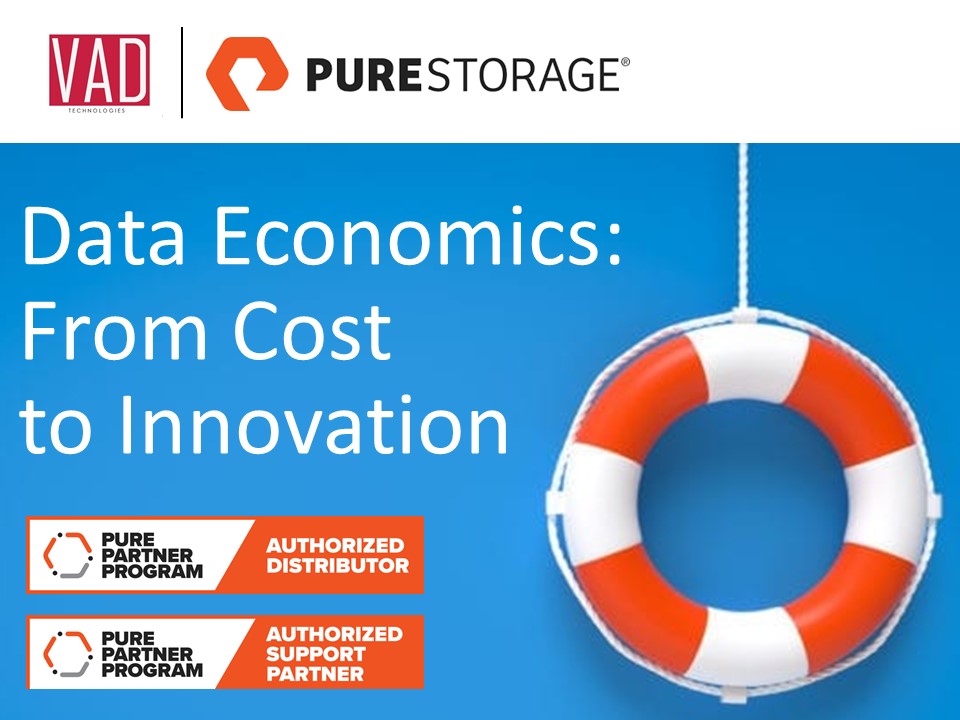|
A data explosion is underway. To manage it and the costs associated with it, organizations need to adopt a new approach and optimize their data economics. Paul Ferraro We recently sponsored a paper that explores the ongoing data explosion from esteemed technology economist and pioneer Dr. Howard Rubin. While data used to grow exponentially, it’s now accelerating beyond this, requiring a new approach. That leads us to ask questions such as:
Why Data Directly Impacts Earnings Though data (i.e., information processed and stored electronically) has been around for more than 70 years, the current era demands that we do more than ensure its security and privacy. It’s increasingly clear that we need to pay close attention to the dynamics and economics of data post-digital revolution. Businesses worldwide need to take note, particularly the rapidly growing financial services sector, which is especially reliant on data. The banking and financial services sector consistently ranks in the top four most data-intensive industries. Banks will spend nearly 2% of earnings on data storage this year and that’s set to rise by a compound annual growth rate (CAGR) of 20% per year. Digitization is an increasingly integral part of business, regardless of the sector, as every touchpoint produces more and more data. From customer information and cybersecurity to regulatory compliance and analytics, AI, and more, digitization means more data. Data growth is so extreme that it has outstripped the methods available to predict its size or storage costs. As a result, old techniques such as Moore’s Law—which states that computers’ speed and capability will double every two years because of increases in the number of transistors a microchip can contain—are no longer relevant. With all this data, a staggering amount goes unused. For example, the average smartphone camera has thousands of photos most people will never look at—or delete. Or consider the average smartphone user’s many apps, each with its own set of data. Now, scale-up that data to the size of a financial institution. Even with optimized cloud and hybrid-cloud storage solutions, it still needs to store this data somewhere, which takes up space and resources. So how do you process these constant new data streams cost-effectively and without waste? More importantly, how do you ensure you don’t continue to invest in optimizing worthless data, diverting spend from mission-critical data? How much energy and resources are you using to keep that useless data available? How to Master Your Data Economics A business needs to keep up with and maintain control over its data economics to adopt new paradigms for procuring storage, provisioning, staying current, and enabling economic agility. Organizations need cost transparency, the ability to cope with volatility, and a system that doesn’t require clunky refreshes or upgrades as the digital landscape evolves faster and faster. This system must integrate with cloud technology and stay updated and modern without disrupting workflow. However, many organizations don’t adopt these solutions due to misconceptions surrounding storage costs: That it is a legacy “Price x Quantity x Asset” expenditure, or that public cloud is the best option because it’s more agile, protected, and inexpensive. But in reality, about half the cost of storage is hardware.* Uplift prices must be considered, such as space, software, cooling, power, management, and the value of simplicity, predictability, and consistency. Companies that have moved to private cloud save about half the storage cost with “dedicated resources.” Depending on the business, a hybrid approach tailored to the organization’s specific needs will often maximize the benefits of cloud storage: cost, reliability, and agility. This insight makes a compelling argument for “as-a-service” models that allow companies to have their on-prem structures with the public cloud’s financial flexibility. The New Model Is “Price x Data x Term = Agility” Pure Storage® combines cloud economics, non-disruptive Evergreen™ architecture, and always-on data optimization to help you permanently eliminate your business’s tech debt. Pure protects businesses from risk in the current era of pandemics, geopolitical unrest, and natural and human-made disasters. With Pure as-a-Service™, you pay only for what you use, with simple and transparent billing, secure data storage, non-disruptive updates, and the agility you need to keep up with the current accelerating digital growth rates. Pure solutions increase agility and efficiency while reducing risks, which is critical for businesses today, especially during times of uncertainty. After addressing the operational and financial constraints, you can focus on getting the most out of your data—your organization’s most valuable asset. Discover how to optimize your data economics by watching the Exclusive Master Class in Data Economics webinar. https://blog.purestorage.com/perspectives/data-economics-from-cost-to-innovation/ About the Author: Paul Ferraro Vice President, Worldwide Pure as-a-Service Sales at Pure Storage https://www.linkedin.com/in/ferraropaul/ Paul is a technology leader with 20 years of proven success in managing and transforming infrastructure services. He leads high-performing organizations impacting multi-billion dollar businesses and crafts OpEx delivery models that ensure business outcomes. His role as VP of Pure as-a-Service Global Sales enables him to extend his business, financial, and technical acumen to directly assist in large scale, digital transformation engagements with global enterprise institutions. For Insights about PURE Storage, go to: https://purestorage.com Details of How to become a PURE Storage Partner can be found here: https://www.purestorage.com/uk/partners.html
0 Comments
Leave a Reply. |
Archives
February 2024
Categories |
ServicesSales
Pre-sales Training Marketing Finance Logistics |
Company |
|


 RSS Feed
RSS Feed
